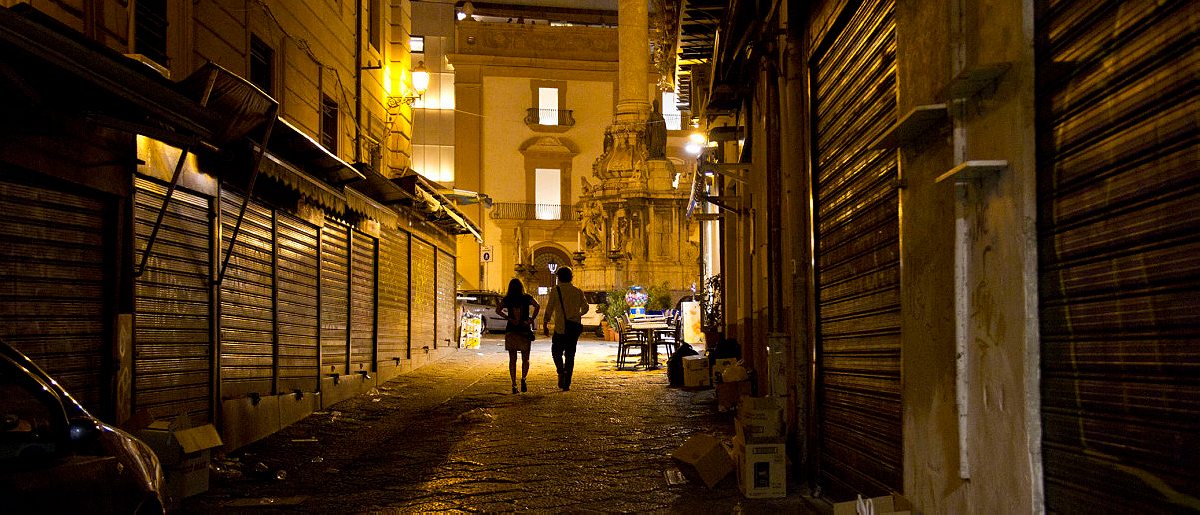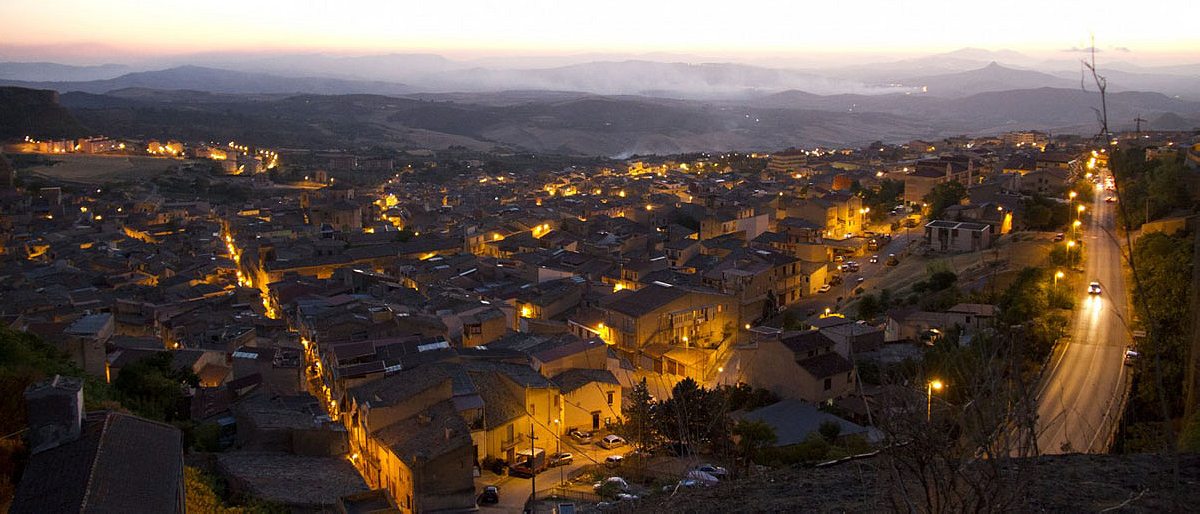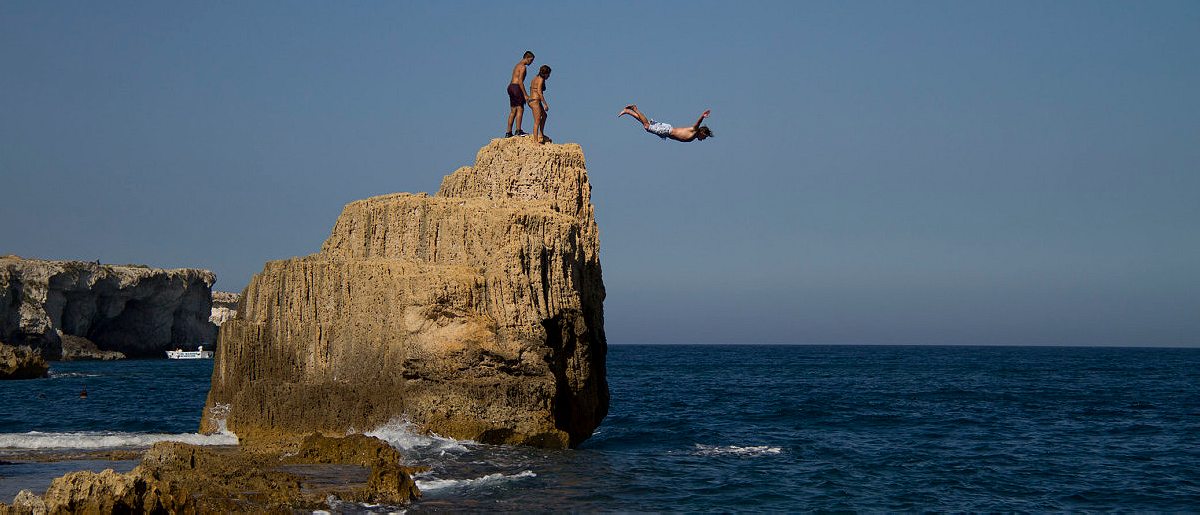We make the rookie mistakes so you don’t have to

You’ll have the island to yourself. Or at least it will feel that way, especially if you’ve spent any time in crowded central Italy. With the exception of a few popular tourist destinations like Cefalú or Taormina—coastal towns that house obscene amounts of bronzed Italian flesh in the summer months—Sicily is a magnificently underappreciated Italian outpost. Even in August we never had any problems with hotel reservations or getting into restaurants—which means you should resist the urge to coordinate every detail of your trip and leave your itinerary up to the gods of spontaneity.

Follow the red sauce trail. The pomodoro-powered checkered-tablecloth Italian fare so common in the US and elsewhere in the world is often disparaged by food snobs who love to point out that it’s somehow inauthentic. Clearly they’ve never been south of Tuscany before. All throughout Sicily you will find the type of saucy, cheesy, fire truck-red fare that inspired the restaurants of Mulberry Street and Boston’s North End—brought over in the wave of Sicilian immigration that crashed on American shores starting in the late 19th century. Be on the lookout for the ancestors of baked ziti, chicken parm and deep-dish pizza.


Drive fast in the north, slow in the south. It seems that the EU’s multimillion-euro investment in Sicily’s highway system didn’t quite make its way to the bottom half of the island. The highway between Messina, where cars and trucks arrive from the Italian peninsula, and Palermo are so smooth and elegant and flush with coastal scenery that you’ll feel like you’re holding a remote control instead of a driving wheel. But as you make your way south past Mount Etna and Catania and eventually Syracuse, three lanes shrink to two which finally morphs into a single cratered, poorly-marked autostrada that winds its way impossibly along the southern coastline. We burned through gallons of diesel in the roundabouts of the south, vortexes of indecision and second-guessing, trying to right our navigational wrongs. If you plan to go south, spring for the GPS.

Do nothing in Palermo. Not nothing, precisely, but next to nothing: Rent an apartment (at butera28.it you’ll find apartments housed in an old palace once owned by Giuseppe Tomasi di Lampedusa, author of Sicily’s greatest novel, The Leopard), wake up to a sweet-ricotta cannolo and a heart-breaking cappuccino at the 150-year-old Antica Caffe Spinnato, take in an aperitivo in the early evening, and, should you feel the need to get loose, drink until the early hours in that crossroads of temptation, the Vucciria. Rinse and repeat. If it sounds like a clichéd Sicilian existence, that’s because it is. Embrace it.


Spend the mornings in the markets. Easy to say that about any old world spot across Europe, but Sicily’s market scenes rise to a level unmatched across the continent. From the Catania fish market in Piazza Carlo Alberto (where men with cleavers and cigarettes dangling from their lips hack 300-pound swordfish into neat little steaks) to Palermo’s Ballaró (a heady stew of butchers, artisans, miscreants and mongers), some of the greatest scenes in Sicily unfold just as the sun rises over the collected bounty of the island.

The Godfather was not filmed in Corleone. It’s easy to wander the narrow streets of this lovely hilltop town and imagine Don Ciccio’s goons searching for a young Vito Andolini, or a newlywed Michael Corleone walking down the ancient church steps with Apollonia in hand. But the bulk of the Godfather series (including those two scenes) was filmed on the east coast of Sicily, in and around Taormina. But if it’s Mafia lore you’re after, there’s plenty to spare in Corleone, the seat of Sicilian organized crime for the better part of the 20th century. The Anti-Mafia Museum in the center of town documents the brutalities of Cosa Nostra while reminding visitors that organized crime’s grip on Sicilian society has loosened substantially in recent years.

Eat ice cream for breakfast. It’s what the locals do, and if you don’t do the same you’ll stick out like an idiot tourist. But seriously, you’ll never find yourself in another place where it is socially acceptably to consume 800-calories worth of sugar and fat before noon. Think two scoops of gelato—with a purity of texture and flavor that makes normal ice cream taste clumsy by comparison—stuffed inside a catcher’s mitt of eggy brioche. A breakfast of champions unrivaled the world over.

Go island hopping. The Aeolian islands off the north coast and the Egadi islands off the west coast near Trapani offer some of the finest scenery and cuisine in Sicily. We found our slice of island paradise on Filicudi, among the last of the Aeolian islands, a three-hour boat ride from Milazzo. Don’t expect the body shots, boat parties and the frat fracas of the Greek islands; Filicudi is pretty mellow by comparison. We ate prickly pears with a family of Sicilian-Australians (a good portion of Filicudi’s residents emigrated to Australia after World War II), hiked through abandoned cliff-side villages, and feasted on bowls of carbonara laced with smoked tuna belly. It’s the type of place you want to keep secret from the rest of the world, but, well, we’re quite fond of our readers.

Don’t drop the M word. The quickest way to piss off a Sicilian is to make some stupid joke about the mafia. They’ve heard them all, and most would be happy to never hear another one again. Hollywood may have glorified the well-dressed, family-centric gangster who silently but firmly holds all the strings, but organized crime has been a long, messy reality that Sicilians are only now starting to shed. You want to talk about the mob? Contact Addio Pizzo, a group that stands against Cosa Nostra kickbacks (called pizzo) and have them recommend hotels and restaurants that refuse to play by old mafia rules.

Take the plunge. Sicily’s rocky coastlines provide ample opportunity for cliff-diving heroics. Pick your poison—flying squirrel, volo dell’angelo (angel dive), or #2 pencil—just be sure to ignore the good-natured ribbing from the Sicilian youth lining up behind you. Our favorite spot for jumping is a few ticks north of Syracuse, just below a fantastic restaurant called Jónico. Load up on bottarga-laced spaghetti and white wine, then hurl yourself into the frothy opal breakers of the Ionian Sea.


Harness the power of pistachio. Sicily is home to the fattest, sweetest pistachios in the world, and you would be smart to seek them out at every possible opportunity. Gelato is the most obvious vehicle for the awesomeness of pistachio, but you’ll find it in dozens of iterations: dressing pastas of raw tomato and garlic, crusting great steaks of grilled swordfish, and ground into a smooth olive green paste and stuffed inside flaky croissants. If there is one item worth bringing home from Sicily, it’s a jar of pistachio pesto—the easiest way to fool people into believing you’re a culinary bad ass.

There are sardines, and then there are sardines. Americans are terrified of small, oily fish—something to do with the fact that most of us grew up eating Filet-O-Fish instead of oil-cured anchovies and grilled mackerel. It’s a tough aversion to conquer, but if ever there were a plate that could do it, it’s pasta con le sarde, Palermo’s most iconic dish. Fresh sardines are cooked down with wild fennel, capers and raisins until they dissolve into a sweet, salty, briny stew that coats thick coils of spaghetti like an ocean pesto. A little toasted breadcrumb on top, a glass of cold white wine on the side and a lifelong food fear dies a dramatic death.

Take to the hills. The southeastern corner of Sicily is the agriturismo capital of the island, where farmers, wine makers, and olive oil producers open their doors to tourists looking to live out their pastoral fantasies—if only for a day or two. Come hungry. One dinner, at the Agriturismo Leone outside Noto, lasted three hours and consisted of a dozen or so antipasti, two full trays of pasta, and a spread of six different grilled meats and sausages. When we told the owner we were too stuffed for dessert, he looked like we had told him one of his pet ostriches died.
Keep it casual. There are chefs doing interesting, creative things with the superlative raw materials of the island, but the best food of Sicily, like the best food of Italy, isn’t to be found in restaurants with Riedel stemware and Michelin pedigrees. The best food we ate—grilled spring onions wrapped in pancetta, pasta alla norma, fried risotto balls—were found at inexpensive bars and trattoria across the island. Signs of a potentially amazing Sicilian restaurant: no tablecloths, no walls, no menus.

Gas station espresso is the lifeblood of Sicily. There’s not a highway rest-stop barista who couldn’t grind and extract circles around the mustachioed coffee police of Portland, Brooklyn, and other hipster havens. Pull over to fill up anywhere on the island and inside you’ll find a deli case stuffed full of a dazzling display of panini and pizza and a Sicilian man playing a $5000 espresso machine like a grand piano. Espressos are short in this part of the country, so if you like to sip your joe rather than scrape it out with a spoon, order a lungo.


They are Sicilians first, Europeans second, Italians third. Remember that Italy the country is more than 100 years younger than the United States, and that the loose confederation of regions often feels like it’s held together by bubble gum. Beyond a handful of culinary similarities, the cultural differences between Sicilians and their paesanos to the north are pretty stark. Sicilians view northerners as cold, arrogant, and suffocatingly formal. Northerners, in turn, say Sicilians are overly excitable and untrustworthy. We’ll stay out of the war of stereotypes and just say that everywhere we went we found Sicilians with huge hearts and open arms. And if you can rattle off a few words in Sicilian dialect, they may just invite you to dinner.